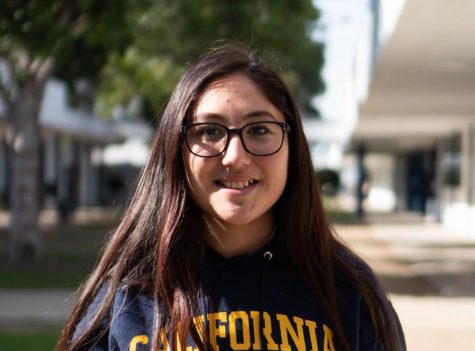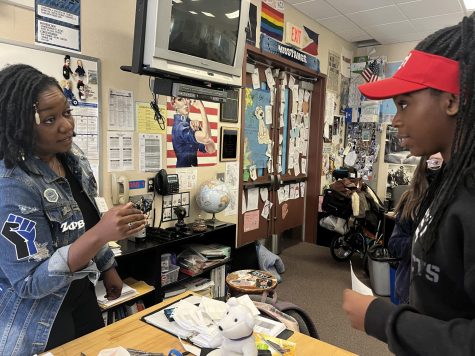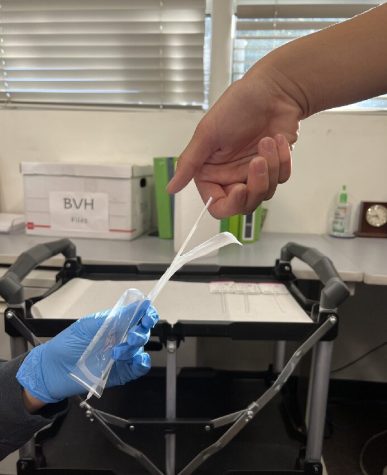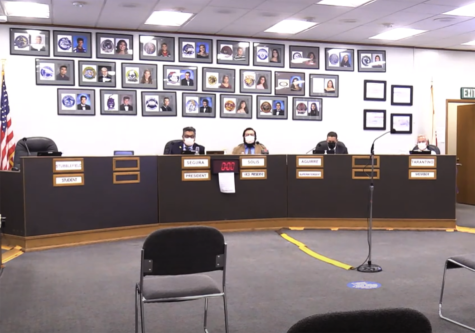Let the students decide: online vs. in-person learning
Students should have the option of whether or not they go back on campus
Schools reopening has been a topic of discussion ever since the COVID-19 pandemic forced schools nationwide to switch to learning on virtual platforms. It’s unknown when Bonita Vista High (BVH) students will go back to school because of the many safety precautions that need to be taken into consideration. Overall, some students may feel safer continuing distance learning rather than going back on campus in order to prevent the spread of the virus more effectively. Students who feel safer learning from home should have the opportunity to stay out of physical school for the safety of themselves and their families.
“Parents and school leaders are very eager for schools to reopen, but understandably concerned about the health and safety of their children during the COVID-19 pandemic,” writes the Center for Disease Control and Prevention (CDC) in the article, “Operating schools during COVID-19: CDC’s Considerations.”
The CDC explains that children with COVID-19 generally show less severe symptoms than adults, meaning the disease can be harder to detect and control in an environment of students. Also, the CDC has looked at countries who have reopened schools already to help predict what may happen if schools in the United States were to re-open.
“To be sure, the best available evidence from countries that have reopened schools indicates that COVID-19 poses low risks to school-aged children – at least in areas with low community transmission,” the CDC said.
This does not mean students, teachers and staff are guaranteed to be safe from getting sick with COVID-19. This is even more of a reason to give students the opportunity to decide if they want to return or stay home. If students do decide to go back, they – along with staff – must take responsibility to protect themselves and others from getting sick.
“In order to reach the goal of reopening schools as safely and as quickly as possible for in-person learning, and help schools remain open, it is important to adopt and diligently implement actions to slow the spread of COVID-19 inside the school and out in the community,” the CDC said.
Admittedly, in-person learning can benefit students in certain ways that learning through a screen can’t. This is because asking for help and working with peers is a lot easier for students when they can physically interact, which the CDC further points out in their article. However, in order to make on-campus learning possible for the benefit of our education, schools need to have a plan for what to do in case of an outbreak to ensure maximum safety for everyone on campus.
“Reopening campuses will require a great deal of planning and preparation, and many expenses that would not have been necessary under normal circumstances. After identifying specific planning assumptions and recommendations based on current health guidelines, [San Diego County Office of Education’s] (SDCOE) subject-matter experts, in consultation with public health officials and other key stakeholders, developed [a plan] to guide leaders through the reopening process,” SDCOE said.
SDCOE shares the COVID-19 Recovery and Reopening Plan with all it’s school districts, including the Sweetwater Union High School District (SUHSD). The plan is separated into six main focus areas, organized in a way that allows schools to pick and customize the plan that best suits them.
Vista Unified School District (VUSD), a school district under SDCOE, recently allowed its schools to open up using this plan but was forced to close down and reconsider their plan after one week because six students in five schools tested positive for COVID-19.
“Students who were placed in isolation because they have one class with a COVID-positive classmate will have other classes that are not affected by the quarantine. In those cases, the students are in a sort of educational limbo — not in virtual class, but not able to attend school on campus either. They may be able to follow those classes on Zoom, or may be assigned independent work with no direct instruction, officials [say],” The San Diego Union-Tribune said.
Students should not be forced into any sort of “educational limbo” and should have the right to avoid these complications by continuing online learning. Not only will on-campus learning cost quarantined students more work and confusion, it will also heavily affect teachers who came in contact with students or staff that test positive for COVID-19. Finding replacements for the teachers can eventually become hard to keep up with, causing schools to suddenly close down again.
“At middle and high schools, the school must hire substitutes for a teacher who is placed on quarantine to cover class periods where students were not in contact with the infected person. With a shortage of substitutes available for regular or long-term assignments, the district may eventually be unable to cover all those classes, [according to] administrators,” The San Diego Union-Tribune said.
This creates even more complicated and problematic conditions that would be avoided by simply staying online for virtual learning. To avoid all these complications and safety risks, students and staff should have the right to decide if they want to continue learning online or if they will trust others to be responsible in following all the necessary protocols on-campus.

Hi! I’m a junior at BVH and this is my second year on the Crusader staff. My position this year is staff artist, which means I get to make graphics and...




